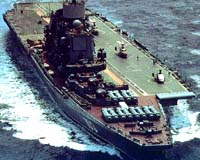| . |  |
. |
London (UPI) Dec 9, 2009 The prospect of hostile forces aiming to attack Western targets by stealth through underwater channels is worrying defense planners so much that naval strategists have called a conference that will focus on the problem. The conference, "Underwater Battlespace 2010," is scheduled to take place in London in January 2010. Conference organizers said specialist discussion panels will bring together naval experts from across the world to highlight security concerns that have been sidelined amid advances in airborne and ground defense systems. Analysts said the changing threat perceptions meant a new emphasis on underwater military challenges and opportunities for more effective defense. A key issue before lobbyists and planners seeking new funding is to devise ways of advancing and exploiting underwater capabilities "to enhance security and increase theater dominance." Analysts said as failures of immigration control had demonstrated, with thousands of migrants defying stringent security systems to reach destinations for economic advancement, littoral security of states with long coastlines was now a major issue. The problem of long, vulnerable coastlines is more relevant to the Americas, but recent instances of uncontrolled human traffic between Africa and the southern Mediterranean's European countries and between Britain and mainland Europe have demonstrated that the threat can be transferred to more worrying forms of security breaches. A notable departure from previous major underwater encounters in the West, during the second world war and subsequent conflicts, is the emergence of unmanned and autonomous craft and systems. Unmanned systems offer both deterrent and offensive options and will play an increasing role in the exploitation of underwater resources for enhanced security, analysts said. Previously, a typical marine warfare scenario focused on submarines and mines, but new technologies have highlighted both threats and opportunities for more effective defense. The renewed emphasis on underwater warfare also answered naval commanders' concerns that airborne and land-based technologies could make much of the naval operations redundant or lead to brutal demands on naval budgets, forcing untimely and unwelcome funding cuts. New technologies offer navies the option to save on precious human resources and deploy, instead of trained personnel, underwater unmanned vehicles in danger zones, such as undersea regions infested with mines. Autonomous vehicles are not easily integrated with existing platforms that still require human input -- and where human casualties in combat can set back under-resourced navies. An effective marriage of conventional means with automation, therefore, is crucial to saving lives and avoiding disastrously crippling costs, especially when expensively trained personnel are lost in action or scant cash resources fail to meet the demands of a security emergency. New technologies have also enabled more effective minesweeping operations aided by brand-new gadgets and techniques. Naval procurement agencies, especially in cash-strapped Western economies that are still fighting off the effects of last year's financial crisis, are being urged to look harder at COTS -- coming off the shelf equipment -- and avoid commissioning duplicate or matching equipment as far as possible. Share This Article With Planet Earth
Related Links Naval Warfare in the 21st Century
 India, Russia settle aircraft carrier deal
India, Russia settle aircraft carrier dealMoscow (UPI) Dec 8, 2009 Ending a protracted logjam over the pricing of a naval aircraft carrier purchase, Russia and India have reached agreement on a key defense deal. The issue came up in high-level talks between Russian President Dmitry Medvedev and visiting Indian Prime Minister Manmohan Singh earlier this week. Details of the agreement were not made public but India's Foreign Secretary Nirupama ... read more |
|
| The content herein, unless otherwise known to be public domain, are Copyright 1995-2009 - SpaceDaily. AFP and UPI Wire Stories are copyright Agence France-Presse and United Press International. ESA Portal Reports are copyright European Space Agency. All NASA sourced material is public domain. Additional copyrights may apply in whole or part to other bona fide parties. Advertising does not imply endorsement,agreement or approval of any opinions, statements or information provided by SpaceDaily on any Web page published or hosted by SpaceDaily. Privacy Statement |